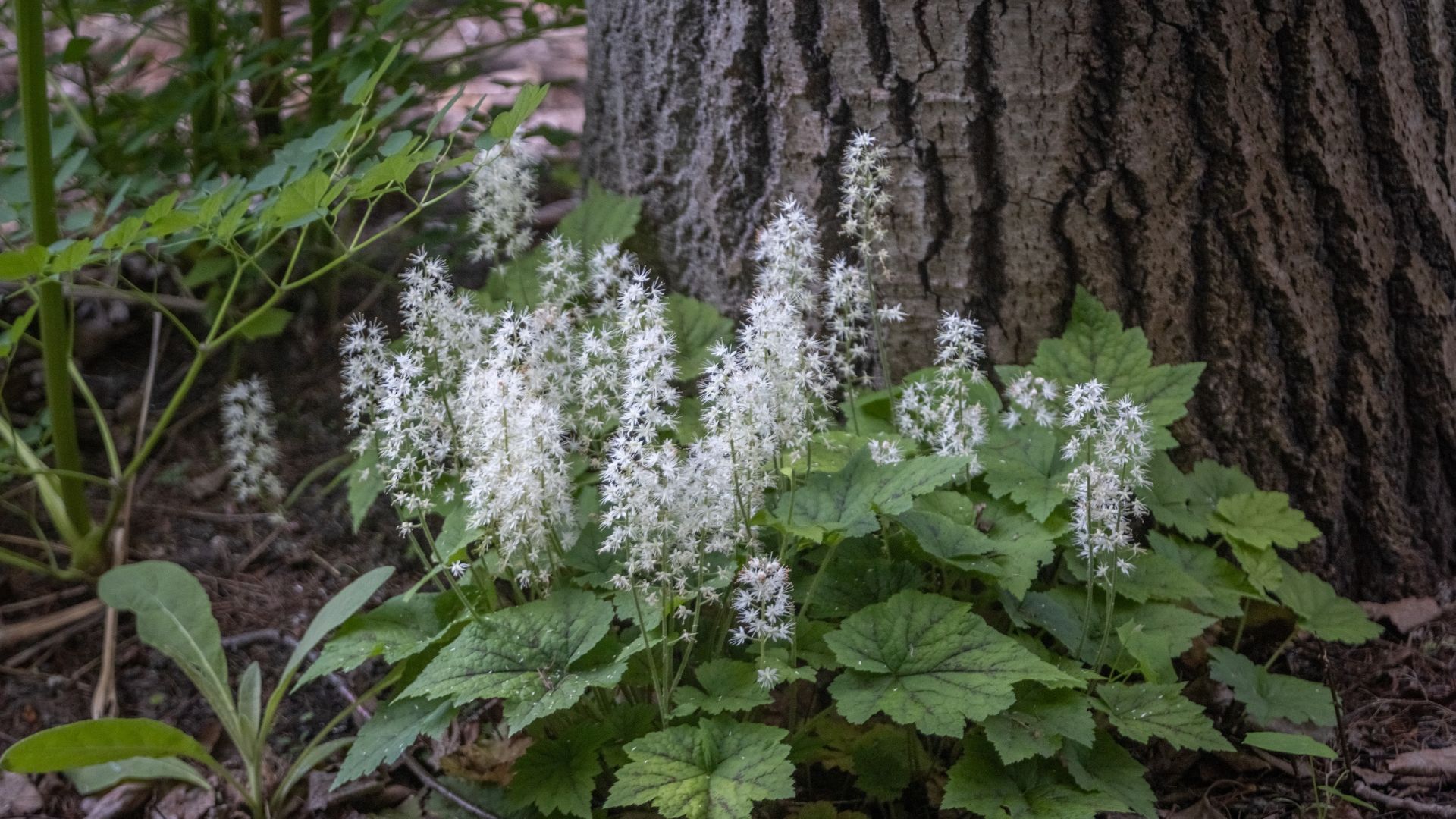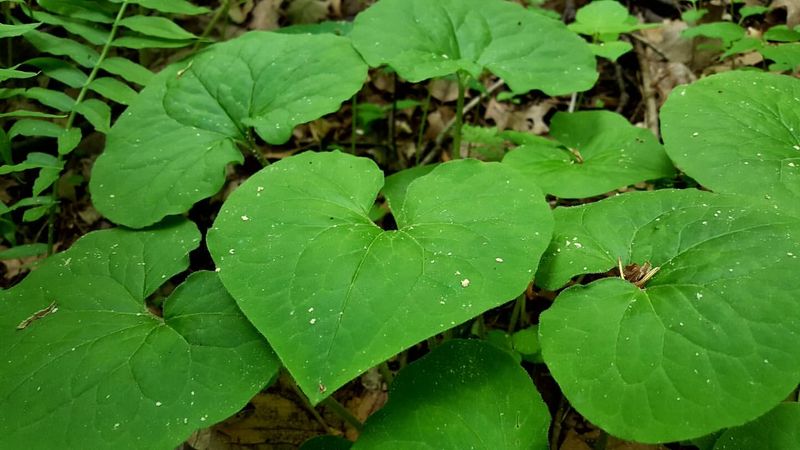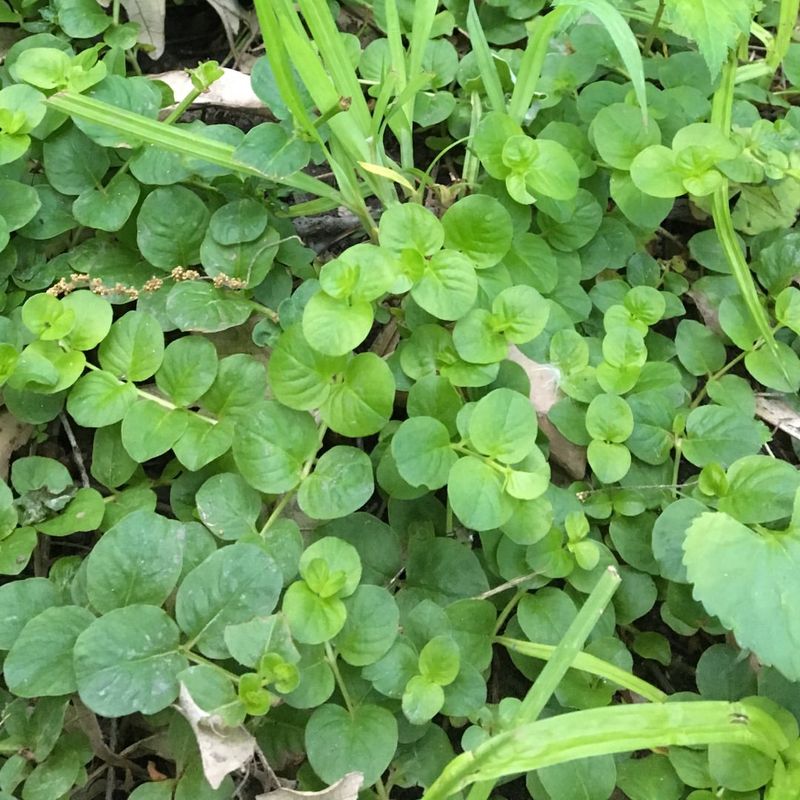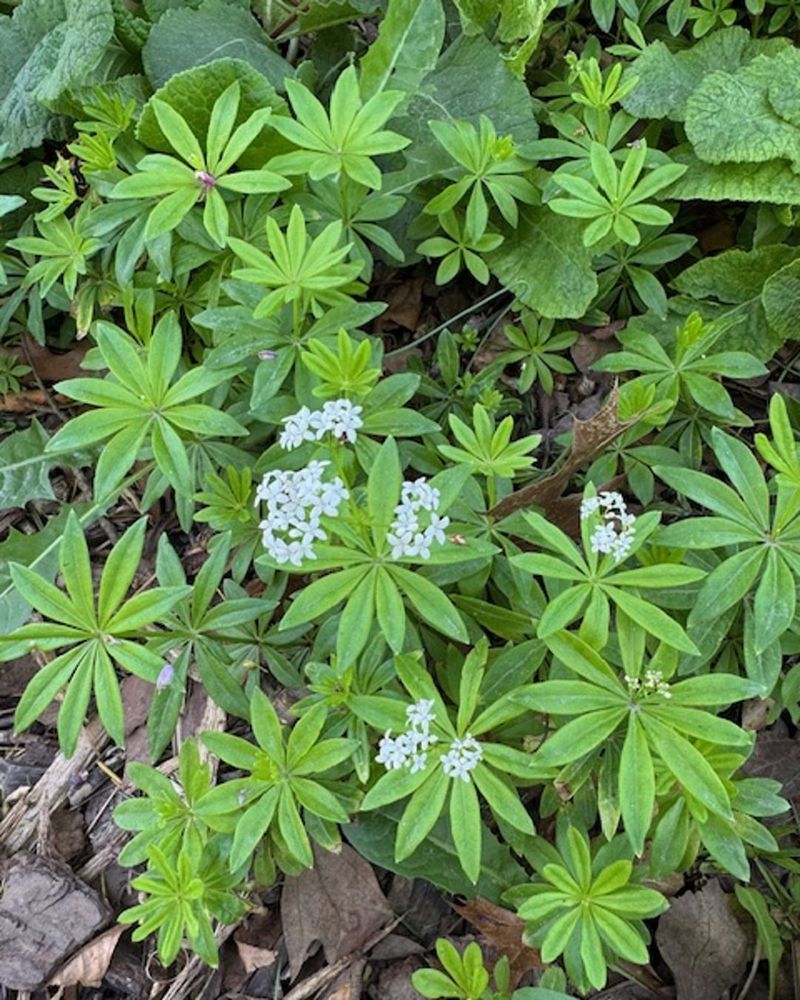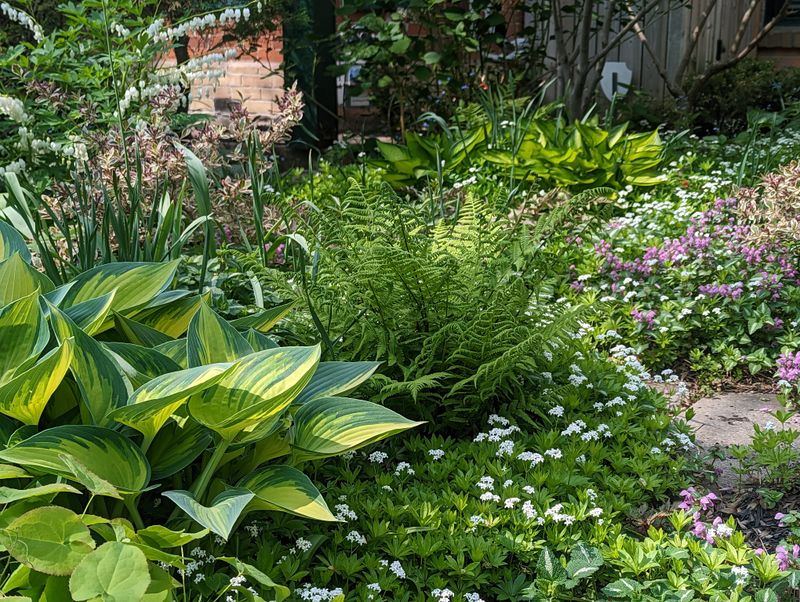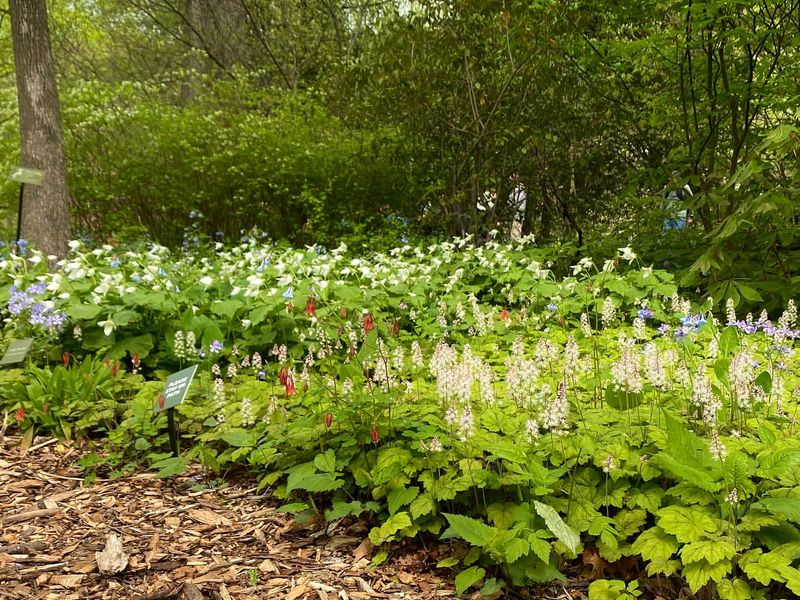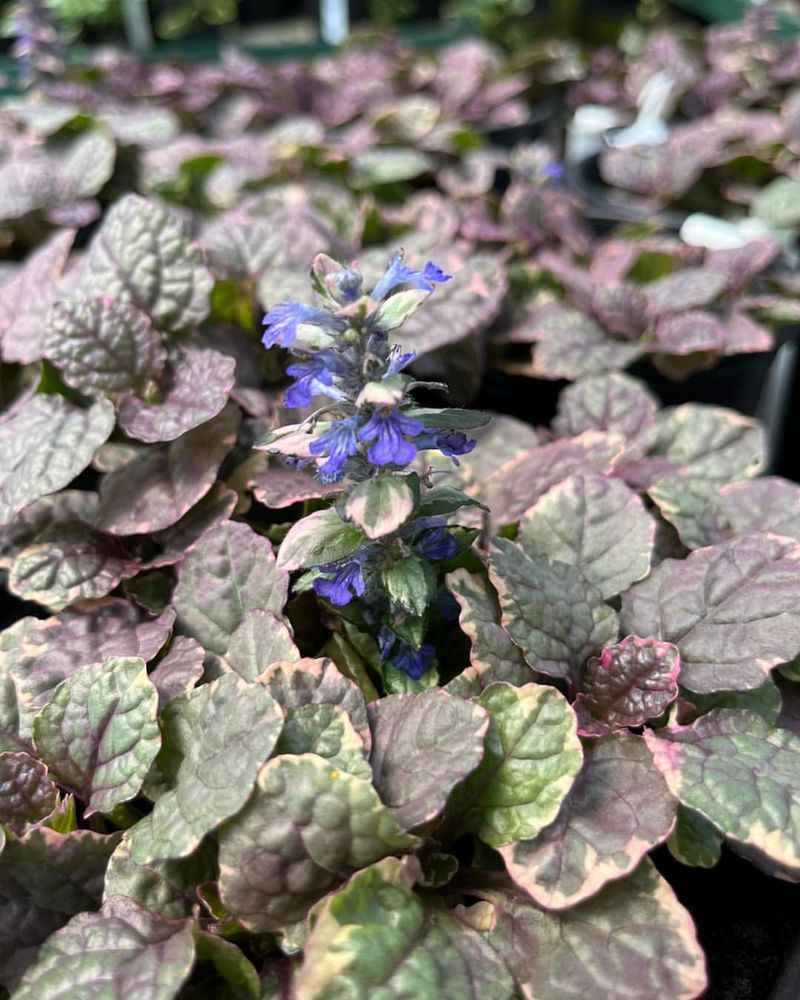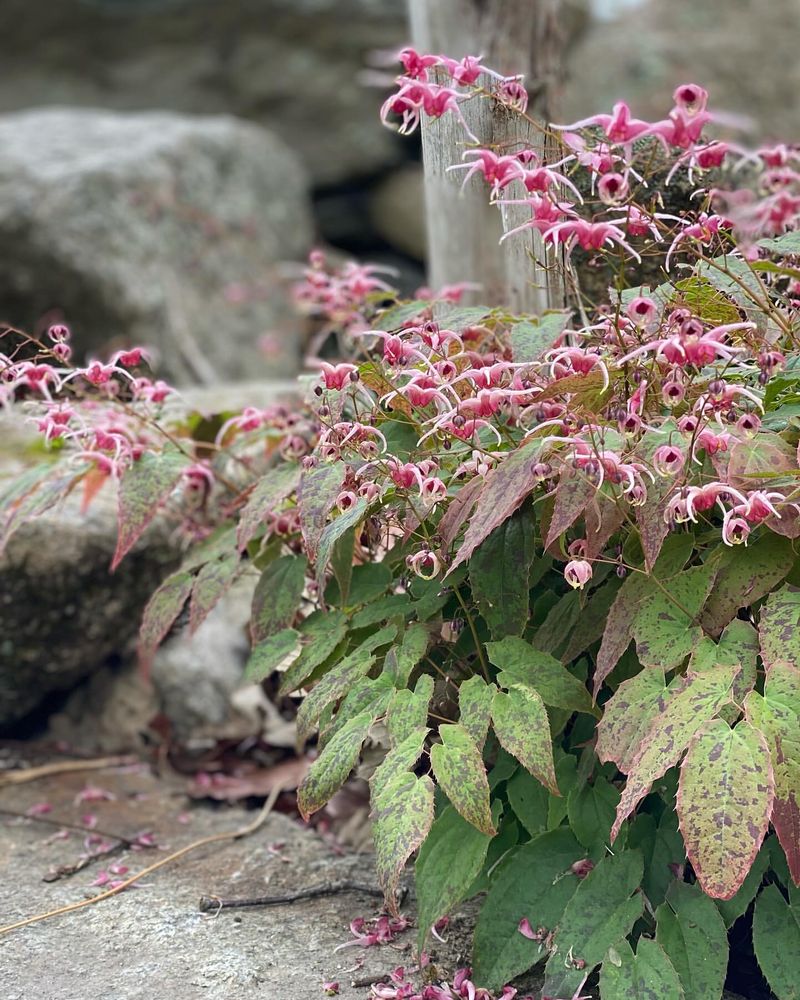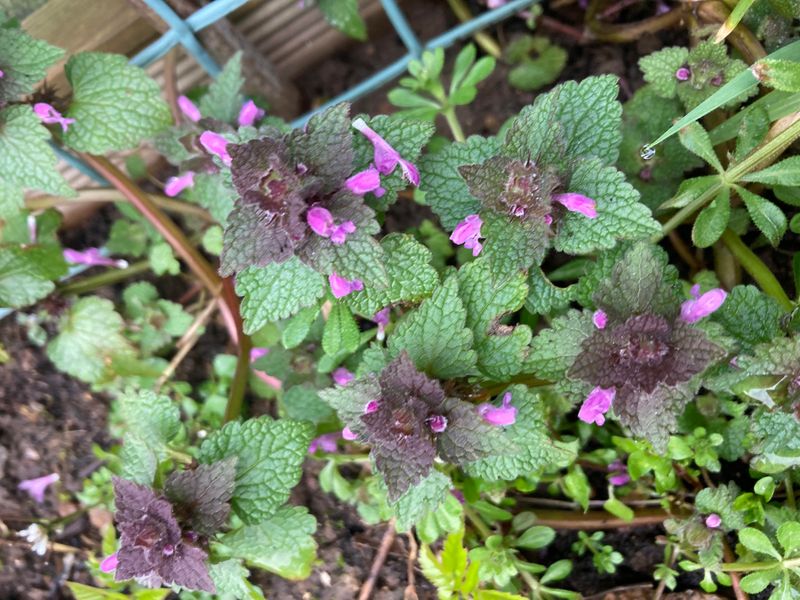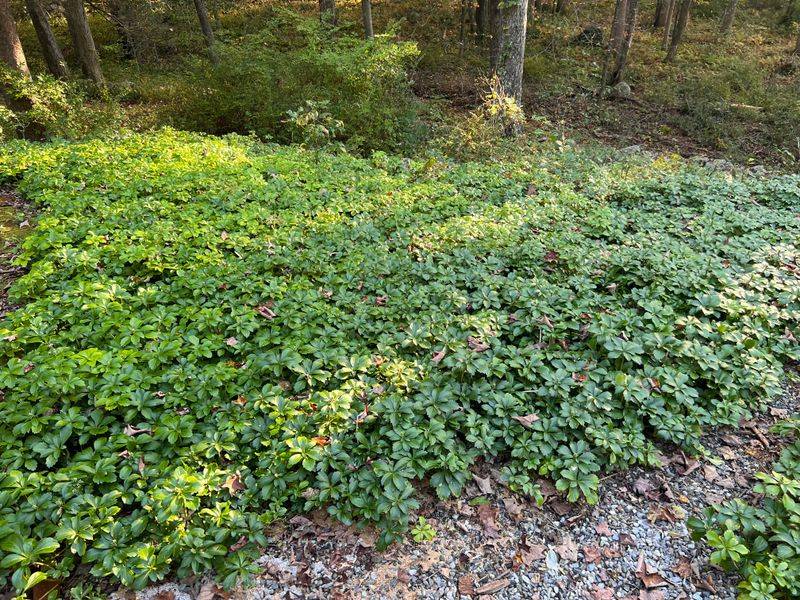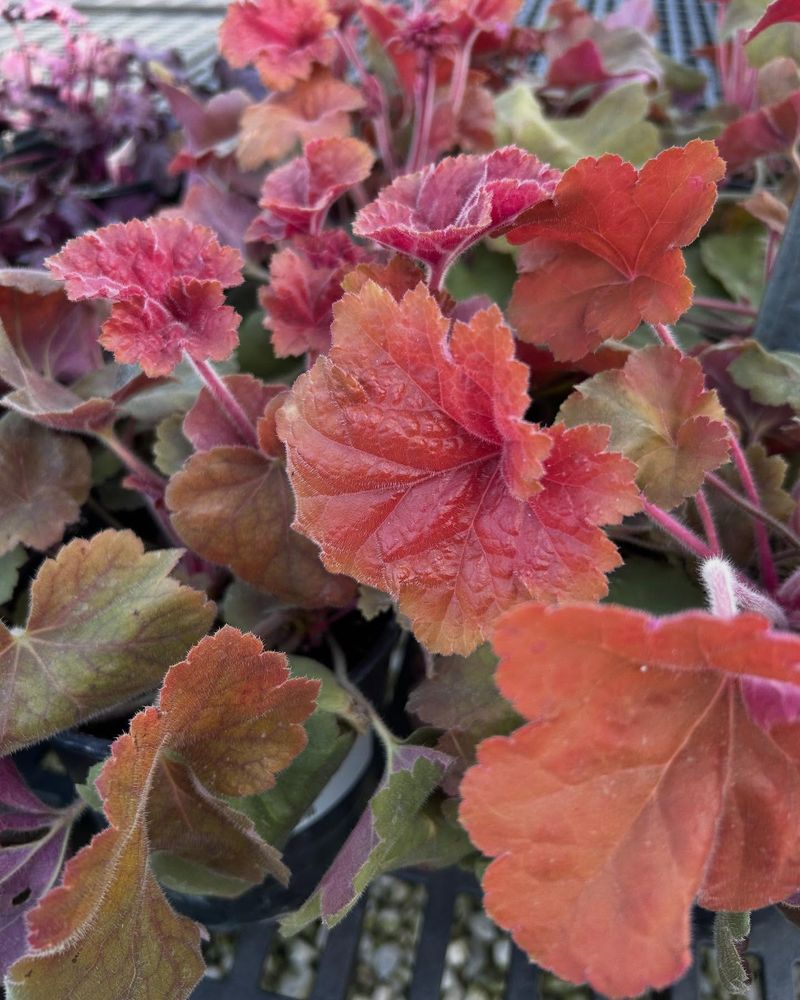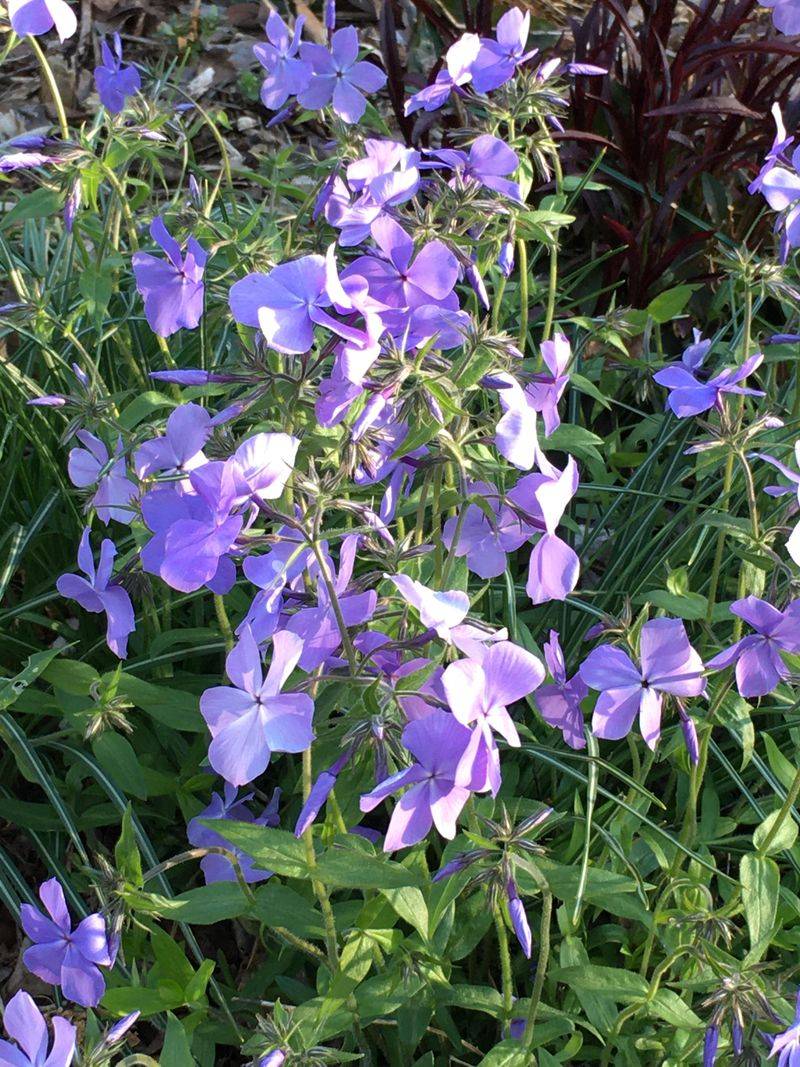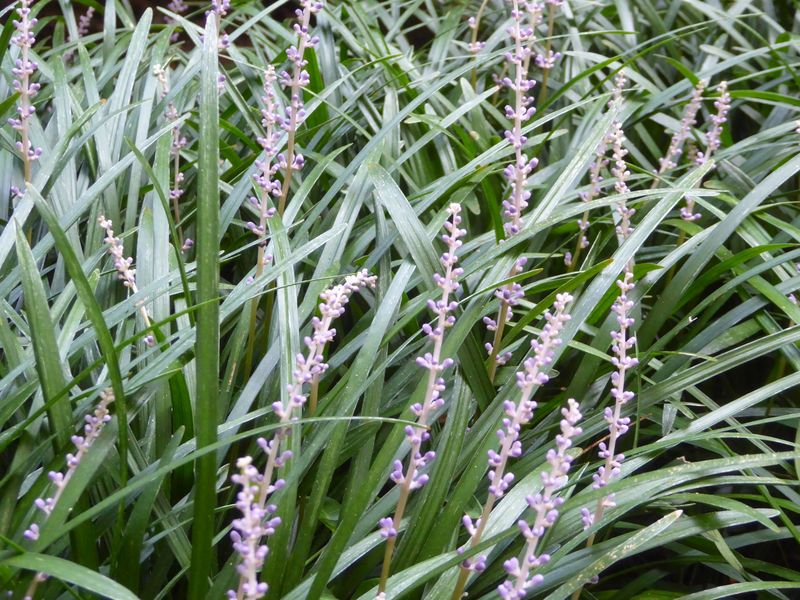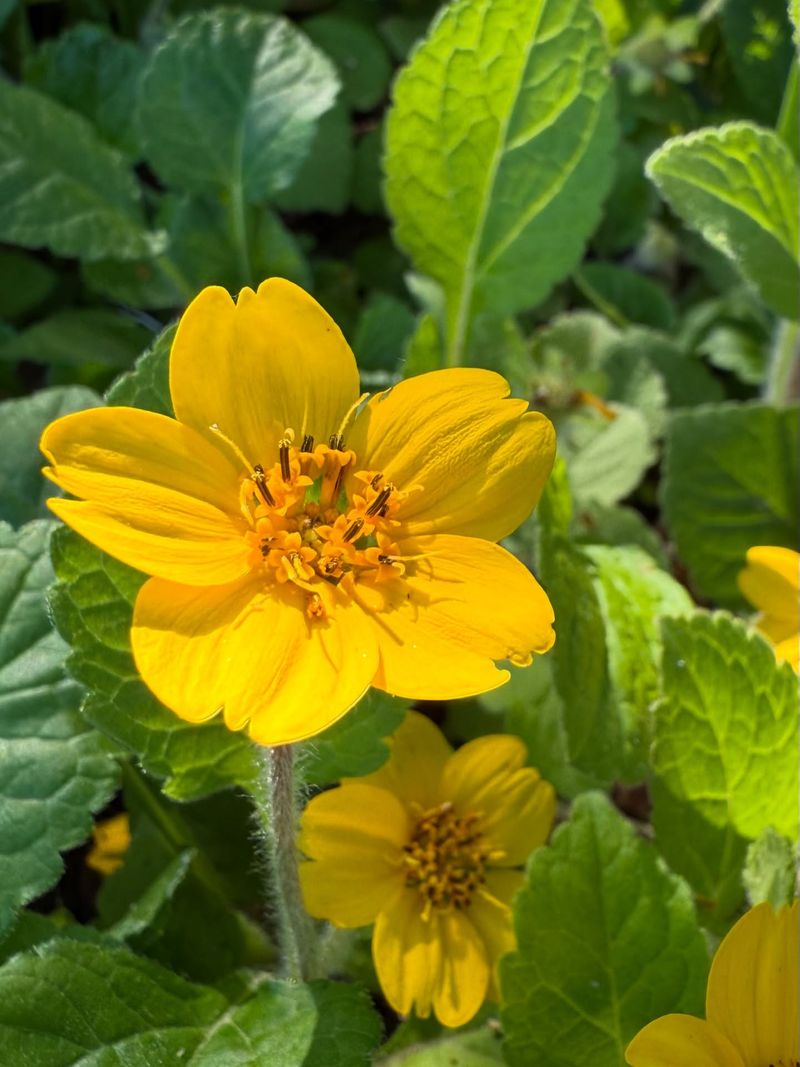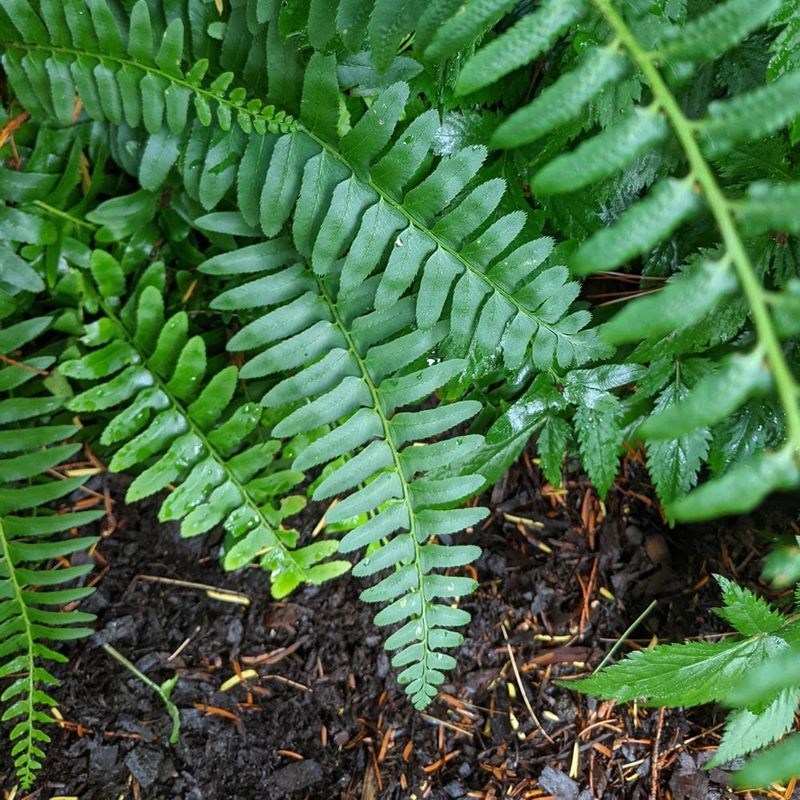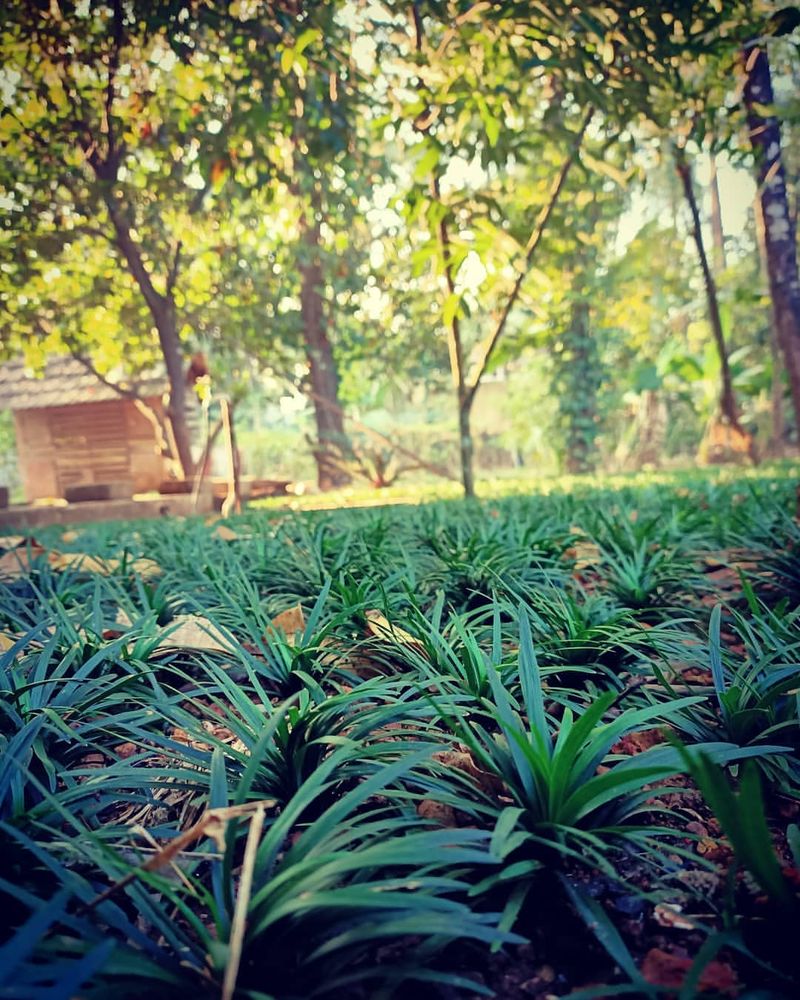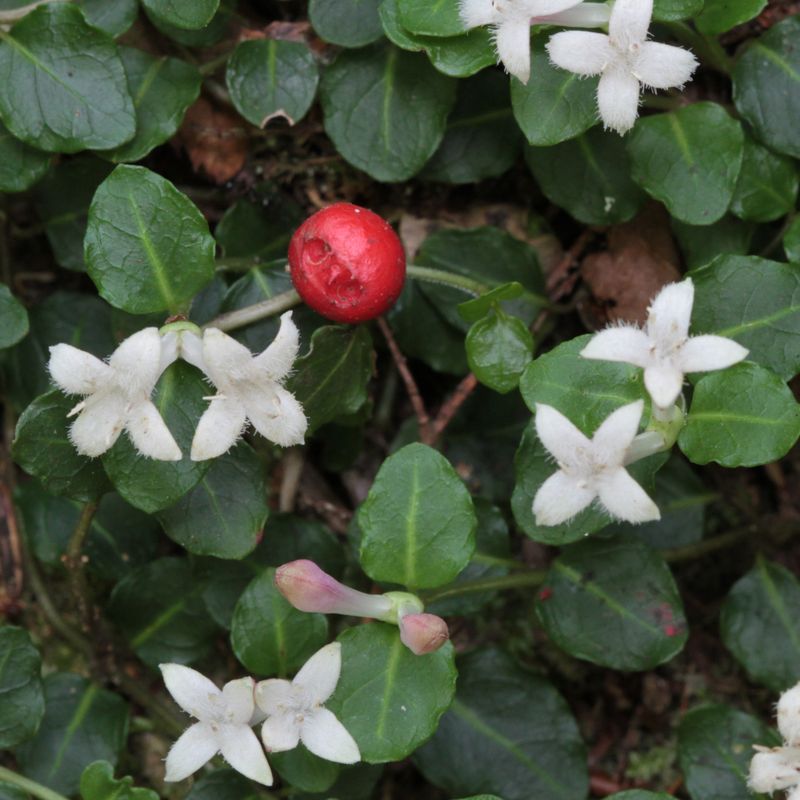Shady corners under Virginia’s towering trees might seem off-limits for gardening, but they’re full of hidden potential. With the right groundcovers, those dim spaces can burst into quiet beauty—turning obstacles into standout features.
These low-growing plants aren’t fussy. They push through poor light, root well in challenging soil, and keep your garden looking lush where others fail. Some even surprise you with delicate blooms that brighten the gloom.
From soft carpets of greenery to textured foliage that plays with light, shade-loving groundcovers bring depth and magic to overlooked spaces. With a little planning, they’ll turn your garden’s shadows into its shining stars.
1. Pachysandra
This evergreen spreads slowly but surely, creating a neat carpet that stays green all year. I’ve watched it thrive under massive oaks in my Charlottesville garden for over a decade without any fuss.
The small white flowers in spring are a nice surprise, though I grow it mainly for the consistent foliage. It doesn’t mind poor soil either.
Once established, you’ll barely need to water it, even during Virginia’s muggy summers. Just plant it where you want it to stay – it’s a commitment plant that will be there for years.
2. Wild Ginger
The heart-shaped leaves emerge in spring and create a beautiful natural-looking ground cover that feels right at home in Virginia’s woodland gardens. You might miss the flowers if you’re not looking closely – they hide under the leaves at ground level.
My favorite thing about wild ginger is how it mimics what you’d find walking through Virginia’s natural forests. The native variety (Asarum canadense) supports local ecology too.
It prefers rich, moist soil but has surprised me by tolerating drier conditions once established. The way it slowly fills in makes it perfect for patient gardeners.
3. Creeping Jenny
The chartreuse leaves brighten up dark corners like nothing else, creating trails of color that weave between other plants. In my Richmond garden, it’s the perfect solution for those awkward spots under trees where nothing else wants to grow.
Water it regularly the first season, and after that, it practically takes care of itself. The tiny yellow flowers in summer are just a bonus.
Fair warning though – in perfect conditions it can be a bit enthusiastic. I’ve had to pull some back from areas where it decided to venture too far. Still worth it for the color it brings.
4. Sweet Woodruff
The delicate star-shaped leaves arranged in whorls create a lacy carpet that looks almost magical in spring when tiny white flowers appear. It grows slowly at first, then suddenly fills in when it’s happy.
I’ve found it does best in Virginia gardens with rich, moist soil and deep shade. The slight fragrance of the leaves reminds me of fresh hay or vanilla when crushed.
Some gardeners in northern Virginia tell me it can spread too quickly, but in my Richmond garden, it’s been perfectly behaved. It dies back a bit during hot summers but always returns.
5. Hosta
Not just individual plants, hostas can form amazing groundcover when planted in drifts. The variety of leaf colors, from blue-green to bright chartreuse to variegated patterns, means there’s one for every garden style.
My grandmother’s Virginia garden had a whole hillside under maple trees covered in hostas, and I’ve tried to recreate that magic in my own yard. They’re surprisingly tough despite looking so refined.
Deer love them though – that’s the one downside in many Virginia neighborhoods. I’ve had whole areas munched overnight, so consider your local wildlife before investing heavily in these beauties.
6. Foamflower
The maple-like leaves form a tight carpet that changes with the seasons – green in summer, sometimes bronze-tinged in fall. In spring, the delicate flower spikes rise above the foliage like foam on a wave.
As a Virginia native plant, it feels right at home in our woodland gardens. I’ve noticed the local insects seem to appreciate it too, which always makes me happy.
It spreads gradually by runners, filling in bare spots without becoming a nuisance. After three years in my garden, it’s just hitting its stride, connecting patches into a beautiful continuous cover.
7. Ajuga
The glossy leaves come in surprising colors – deep purple, bronze, or variegated patterns that add unexpected drama to shady spots. In spring, the blue flower spikes attract bees and add vertical interest.
I’ve used it to edge pathways through wooded areas of my yard, and it’s been tough enough to handle occasional foot traffic. Even our Virginia clay soil doesn’t seem to bother it much.
Some gardeners find it spreads too quickly, but I’ve found that’s only true in ideal conditions. Under trees with competing roots, it moves at a reasonable pace that’s easy to control.
8. Epimedium
Often called fairy wings because of the delicate heart-shaped leaves, this groundcover brings a touch of elegance to woodland gardens. The spring flowers dance above the foliage on wire-thin stems, seeming to float in mid-air.
I planted some under a stubborn black walnut tree where nothing else would grow, and five years later, it’s thriving despite the tree’s toxic juglone. That’s when I became a true believer in its toughness.
It’s slow to establish but worth the wait. In Virginia’s climate, I’ve found it holds up through summer heat better than many other shade plants, keeping its good looks all season.
9. Lamium
The silvery-patterned leaves catch what little light filters through the tree canopy, brightening dark corners of the garden. Pink or white flowers appear for months, making it more than just a foliage plant.
During our Virginia summers, it’s been a reliable performer even when other plants struggle with the heat and humidity. The way it weaves between other plants makes it a great filler.
I’ve found it’s perfect for those difficult spots where tree roots make the soil dry and poor. Last year it was the only thing that survived under my thirsty maple tree, which says a lot about its toughness.
10. Allegheny Spurge
This native pachysandra is less commonly used than its Japanese cousin but deserves more attention in Virginia gardens. The mottled leaves develop beautiful bronze tints in winter, adding seasonal interest.
I stumbled across it at a native plant sale years ago and now consider it one of my best garden discoveries. It spreads more slowly than Japanese pachysandra but has more character.
The flowers have a sweet, subtle fragrance that fills the air on early spring mornings. Being native to our region means it handles Virginia’s clay soils and variable weather patterns with ease.
11. Coral Bells
Though typically thought of as individual plants, when grouped together, coral bells create a stunning low groundcover with incredible leaf colors ranging from purple to caramel to silver. The flower stalks rise like fireworks above the foliage.
After experimenting with different varieties, I’ve found ‘Palace Purple’ and ‘Caramel’ perform best in Virginia’s heat and humidity. They seem to appreciate afternoon shade here more than in northern gardens.
They’re not as aggressive as some groundcovers, which makes them perfect for areas where you want a more controlled look. The hummingbirds that visit the flowers are a delightful bonus.
12. Creeping Phlox
While often associated with sunny spots, woodland phlox varieties thrive in dappled shade, creating a carpet of color in spring that’s hard to beat. The fragrance on warm evenings can transport you back in time.
I’ve had luck tucking it between tree roots where the soil is lean. The soft blue flowers remind me of the Virginia mountains in springtime, creating that sense of place we all want in our gardens.
Unlike some groundcovers that look good only when flowering, the dense mat of foliage stays neat all season. It’s gone dormant during severe droughts but always bounced back with the fall rains.
13. Liriope
Often called monkey grass, this tough-as-nails groundcover forms grassy clumps that spread gradually to create a sea of texture. The purple flower spikes in late summer are an unexpected treat when most shade gardens have finished blooming.
During the worst drought we had in central Virginia, my liriope kept looking fresh while everything around it wilted. That’s when I really came to appreciate its resilience.
It transitions beautifully from sun to shade, making it perfect for those tricky spots under trees with changing light. The variegated varieties add brightness to dark corners and seem to glow in evening light.
14. Green And Gold
This Virginia native creates a low mat of scalloped green leaves that light up with bright yellow flowers in spring. The cheerful blooms seem to float just above the foliage like little sunbursts in the shade.
I first saw it growing wild along a stream in the Blue Ridge and immediately wanted it in my garden. Now it’s one of my favorites for naturalizing under deciduous trees.
It spreads at just the right pace – filling in nicely without becoming invasive. During our humid Virginia summers, I’ve noticed it prefers spots with morning sun and afternoon shade to keep it from looking tired.
15. Christmas Fern
These evergreen ferns create a year-round presence in the shade garden with their deep green, leathery fronds. The name comes from their Christmas-stocking shape and the fact that they stay green through December.
After losing several other plants to deer browsing, I’ve come to value these ferns even more – the deer completely ignore them. They’re perfect for those woodland edges where wildlife pressure is high.
They grow slowly but are incredibly long-lived. Some in my garden are going on 15 years and look better than ever. The way they unfurl their fiddleheads in spring is one of nature’s small miracles.
16. Dwarf Mondo Grass
The fine, grass-like texture creates a carpet that reminds me of a Japanese garden – refined and elegant. At just 2-4 inches tall, it’s perfect for creating that moss-like look without the maintenance that true moss requires in Virginia’s climate.
I’ve used it between stepping stones in shady areas, and it handles light foot traffic surprisingly well. The black berries that appear in fall are an unexpected bonus.
It’s slower growing than regular mondo grass, which means less maintenance but also more patience required. After three years, mine has finally filled in completely, creating the seamless look I was hoping for.
17. Partridgeberry
This native Virginia woodland plant creates a delicate carpet of tiny rounded leaves on trailing stems. The bright red berries that persist through winter provide welcome color during the drab months and remind me of tiny Christmas ornaments.
I found it growing naturally on our property and encouraged it to spread under some old oak trees. Its subtle beauty is easy to miss if you’re not looking closely.
It’s perfect for those authentic woodland gardens where you want plants that belong in Virginia’s natural ecosystem. The white flowers are tiny but charming if you get down to their level to appreciate them.

